The Very Reverend Samuel S. Marquis
First Dean of the Cathedral, 1908-1915
In Actuality A Cathedral is a church that may house not only a parish congregation, but is designated to serve as the central church for its Diocese (a geographic and administrative affiliation of Episcopal churches). The Diocese is headed by a Bishop (from the Latin episcopus, “bishop,” as is the word “Episcopal” itself) and the Cathedral is the church in which he or she is centered. The cathedral itself is under the pastoral care of priests known as canons, the head of which is the Cathedral’s Dean, who serves as the Bishop’s representative.
History of the Parish
Though St. Paul’s has existed as a Cathedral only since 1908, St. Paul’s has existed as a parish since 1824. St. Paul’s Parish was founded in what was at the time the Northwest Territories, as Michigan did not become a state until 1837. It is the oldest Episcopal parish in the Northwest Territories.
It should be noted, though, that Episcopalians were relative latecomers to the city. Detroit had by this time already existed for well over a century, having been founded by the French in 1701 and chartered as a city in 1801. Christianity had taken root here from the very start of settlement. Antoine de la Mothe de Cadillac, founded not only Detroit but also the Catholic parish of Ste. Anne’s on the second day of French settlement on the banks of the Detroit River. Still alive and very active in southwest Detroit, Ste. Anne’s is presently the second-oldest continuously functioning parish in the United States.
Episcopalians first came to the area when Detroit fell under British control, from 1760 until 1796, and was thus part of Upper Canada. Missionaries representing the Society for the Propagation of the Gospel in Foreign Parts, along with immigrants from English-speaking countries, first brought Anglicanism to Detroit, and the need arose for a parish to serve this community. The call was first answered by The Rev. Richard Pollard, resident minister in Sandwich (south of present-day Windsor, Ontario), who crossed the Detroit River in a canoe in order to minister to Anglicans, now Episcopalians, on what was now the American side of the river. He was followed by The Rev. Richard Cadle, who in 1824 became the rector of the newly formed St. Paul’s Episcopal Church.
The original site of St. Paul’s was on what was and remains Detroit’s “main street,” Woodward Avenue, in the block bounded by Congress and Larned – presently the site of One Detroit Center (1992). The church moved to its second site by 1851, to the corner of Congress at Shelby on the near west side of downtown.
Largely on the initiative of St. Paul’s, the Diocese of Michigan was organized in 1832, and parishioners led by C. C. Trowbridge founded Christ Episcopal Church on Jefferson Avenue in 1846. Christ Church still occupies both its original site and its original building, now one of the oldest buildings in the city of Detroit. Other parishioners, led by Henry Baldwin, left in 1859 to found St. John’s Episcopal Church on Woodward Avenue. St. John’s also occupies its original building and site, though both have been altered with the widening of Woodward Avenue and the building of Comerica Park next door. This history is a work in progress; please continue to check back.
The Building
The Cathedral Church of St. Paul was designed by Ralph Adams Cram (1863-1942) of the firm Cram, Goodhue, Ferguson of Boston and New York, and who was then America’s leading exponent of the Gothic Revival architectural style. He chose to design the Cathedral in the 14th-century English style of Gothic architecture, an early form of this style in which the features which one normally associates with Gothic architecture – soaring, pointed arches, wide expanses of stained glass, and elaborate tracery – are present, though in simplified and severe form. The massive pillars which support the roof (and eventually the central tower, should it be built) are more typical of Norman architecture, the architectural style which preceded Gothic. Likewise, the very slight points to the arches are closer to the rounded arch that was typical of the Norman style. Even so, in the Cathedral we see the elements of the Gothic style emerging. For example, the very small flying buttresses which help support the weight of the lead roof, the arched roof of the nave, and a tower at the crossing are all typical of Gothic architecture. Built entirely of limestone, the Cathedral is also built according to medieval construction techniques. There is no steel superstructure in the building at all – a surprising fact, given its wide use in commercial buildings and skyscrapers of the same period – so that its enormous weight is entirely self-supported.
Cram felt that the Gothic style best expressed humankind’s relationship God, and he deliberately designed the building to put that idea forth. The Cathedral is intentionally dim, for example, to suggest the mystery of the Divine, and much of the lighting that you see in the Cathedral is actually a later addition. Of the building, Cram said that “In St. Paul’s Cathedral an attempt has been made to adapt to modern ideals, conditions, and environment that style of architecture which Christian civilization developed for its own self-expression, the so-called Gothic of the middle ages.” In the massive power of its overall size and in the delicacy in its details, the Cathedral is certainly one of Cram’s best works, and it remained one of his personal favorites up to his death.
The Cathedral is listed on the National Register of Historic Places.
Sources: Kathryn Bishop Eckert, Buildings of Michigan (New York: Oxford University Press, 1993). Volume 1 in series Buildings of the United States, Society of Architectural Historians.



